
This place was sculpted by ice,” said my hiking guide Rodrigo Marques, as he gestured towards granite ridges that receded into the distance like a dark, choppy Atlantic ocean. “These deep U-shaped valleys, the plateaus among the peaks – they are all from the movement of glaciers during the last Ice Age.”
Comparisons to distant landscapes – Dartmoor’s tors, the Scottish Highlands, the Alpine foothills – came to mind as I scanned the rugged mountain scenery around us. Yet only a couple of hours earlier, a sweatier version of me had hopped into a hire car in Porto. Countless hairpin turns later, we were deep into the country’s interior at Serra da Estrela Nature Park. With some points at 1,250 metres above sea level, it was 10 degrees cooler than in the city, and unlike any Portuguese landscape I’ve laid eyes on before.
Read more: 8 most beautiful cities and towns to visit in Portugal
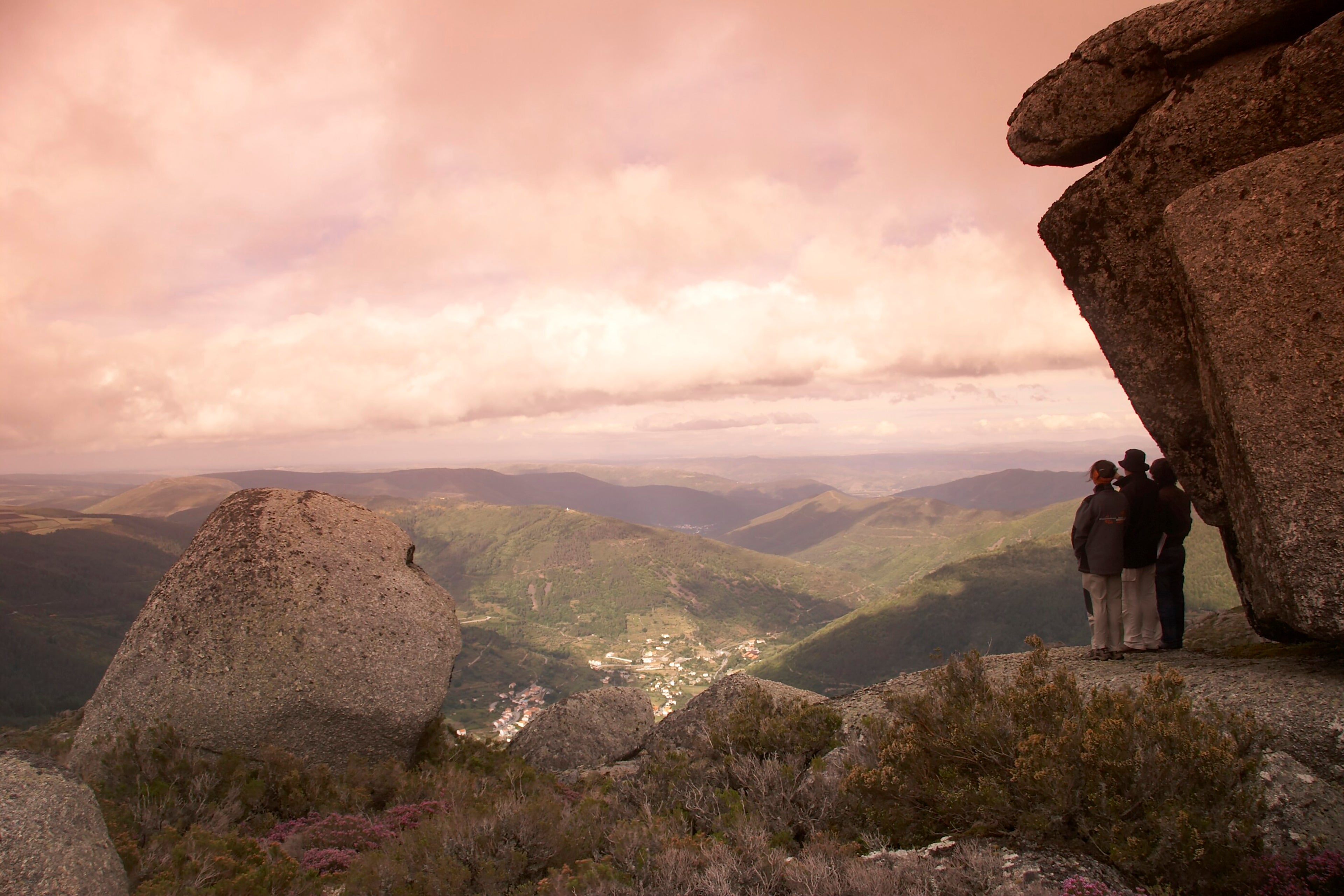
From our vantage point on a windswept outcrop, the remnants of glacial lakes were glassy shards against a scrubland dotted with pine trees, thistles, juniper and gorse. As for the boulders heaped around us, they seem to have been hurled by more turbulent forces than millennia-long weathering – mountain giants, perhaps.
Serra da Estrela is the country’s tallest mountain range and home to its only ski resort. I visited in midsummer, however, so the high-altitude pastures were tinted purple with heather and flickering with yellow gatekeeper butterflies.
Marques was leading the daily guided walk for guests of Casa das Penhas Douradas. He pointed out a booted eagle wheeling in the brooding sky, and the churned-up earth where a wild boar had been foraging.

We’d taken the Fraga das Penhas e Albufeira de Vale do Rossim route, where fauna such as these were a highlight. So too were the native Bordaleira sheep, who graze across the plateaus during summertime. Shepherds lead them from lower-lying village pastures – festooned with colourful pom-poms and clattering bells – in a centuries-old ritual known as transhumance. Many of the national park’s waymarked trails trace these ancient routes, passing ice-cold waterfalls and praia fluvial (river beaches) along the way.
Read more: Why you should swap Lisbon and Porto for this Portuguese city, where a glass of wine costs €2
Houses, on the other hand, are scarce and quirkily vernacular. Cottages are squeezed into the cracks between boulders, from which I half expected the rock trolls from Frozen to emerge (really, they’re the summer retreats of wealthy Portuguese city-dwellers). Several started as sanatoriums for tuberculosis patients, who were sent to convalesce in the fresh mountain air.
Casa das Penhas Douradas was built onto the bones of one such refuge, before becoming a boutique hotel in the Alpine-chic mould. There are vintage skis and snowshoes displayed on plywood walls, while Scandi seating is pulled close to log burners and firepits. A Portuguese spin on the apres-ski afternoon tea is served to walk-weary guests: think freshly-brewed chamomile tea, oven-warm pastel de nata and nips of port.
Archival photographs in the cosy, crimson-hued lobby show bands of moustached men fully booted and blanketed, as if heading for the north pole. They were members of the Geographical Society of Lisbon at the 1881 scientific expedition. It’s a reminder of just how remote and mysterious this region was considered, even by its own citizen,s until relatively recently.
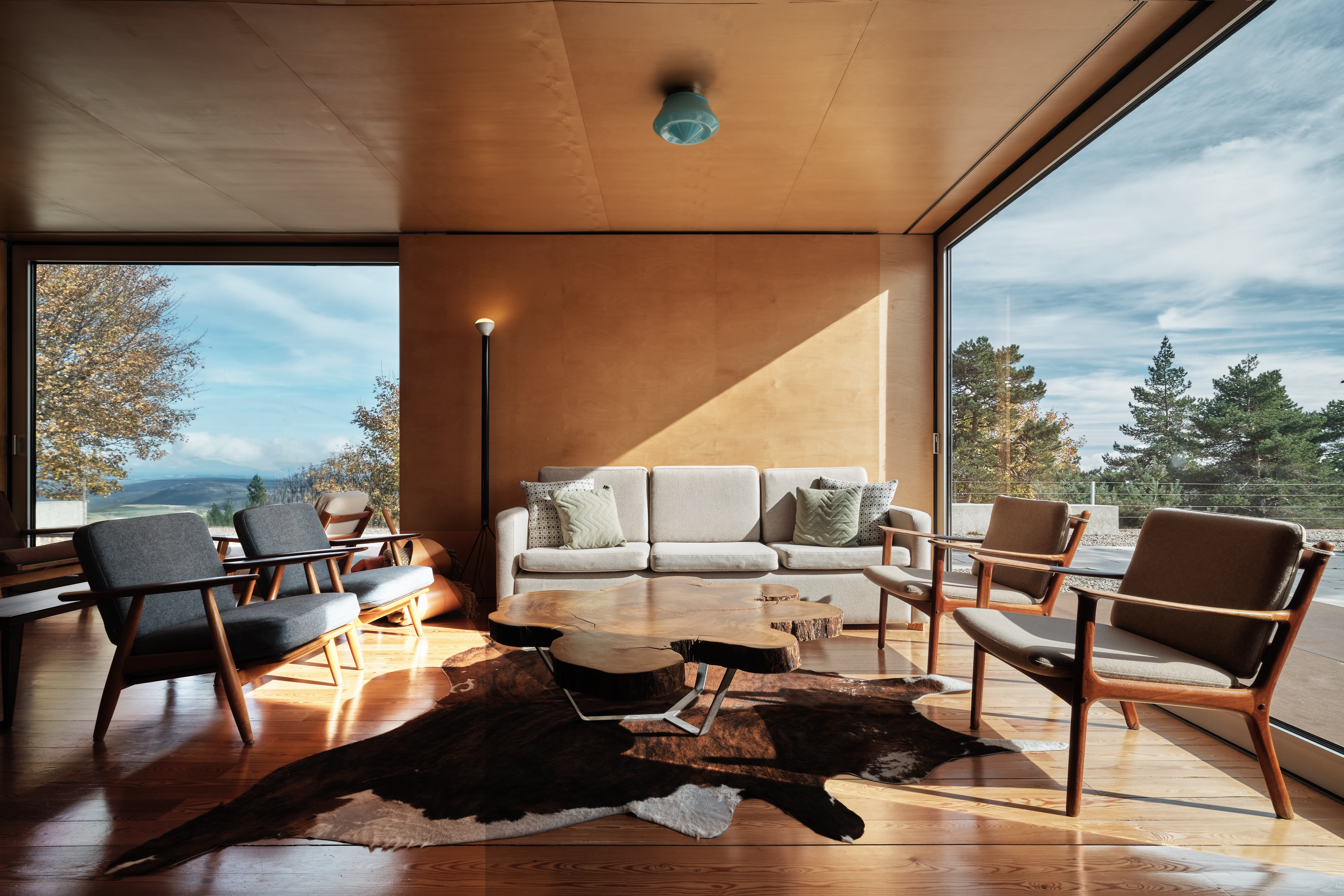
“For a lot of Portuguese people, ‘holiday’ means going to the beach,” Marques told me. “But we are starting to see more interest in coming [to the mountains] for outdoor pursuits.”
Upgraded accommodation is helping raise the region’s profile. Three miles up the road from Casa das Penhas Douradas, its sleeker, younger sibling, Casa de São Lourenço, is Portugal’s first five-star mountain hotel. While I saw fragments of the humble pousada that originally stood there, the floor-to-ceiling glass extension gives the impression of floating above the Zêzere, which flows through one of Europe’s largest glacial valleys. The spa is worthy of a Swiss wellness retreat, complete with birch-stick massages and evening hot tub soaks beneath bright constellations.
Read more: Octant Evora, Alentejo, Portugal hotel review
Isabel Costa, co-owner of both hotels, told me she thinks overtourism and heatwaves in other parts of Portugal will influence more visitors to turn their attention upland. “In a world experiencing climate change, Serra da Estrela’s altitude makes it a special place where you can walk, breathe and explore outdoors in comfort, even at the height of summer,” she said.
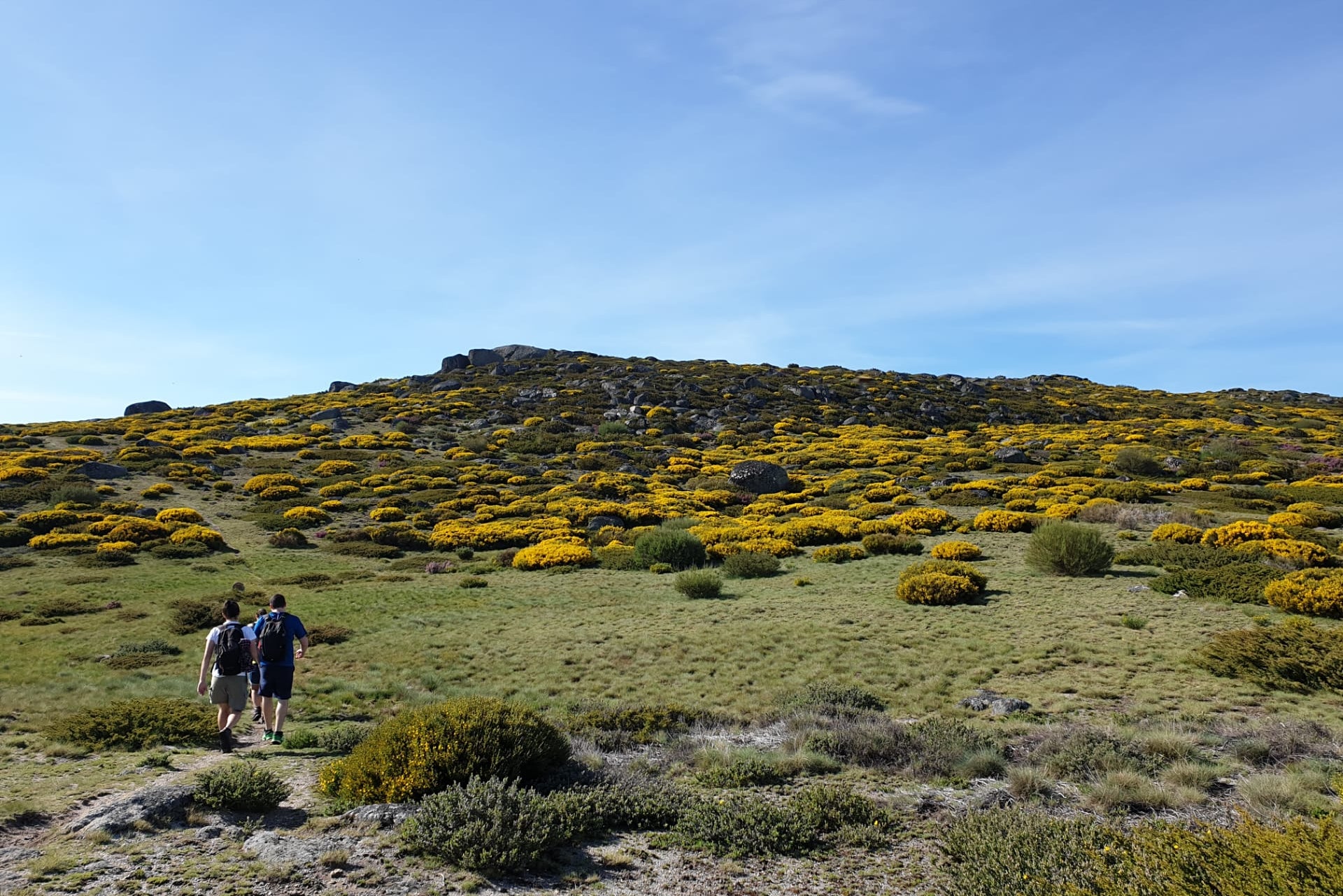
Taking the “coolcation” trend a tad further than I’d bargained for, unseasonable rains set in on my second day. Silver birch trees were bent double in the wind. Sheep huddled soggily beside boulders. It was a good moment to see the artisan weavers at work in nearby Manteigas. Inside the riverside factory, traditional looms were spinning sheep’s wool into Burel, the thick, stiff, water-resistant fabric used to make shepherds’ cloaks. “For generations, Burel was the fabric of survival,” Costa says.
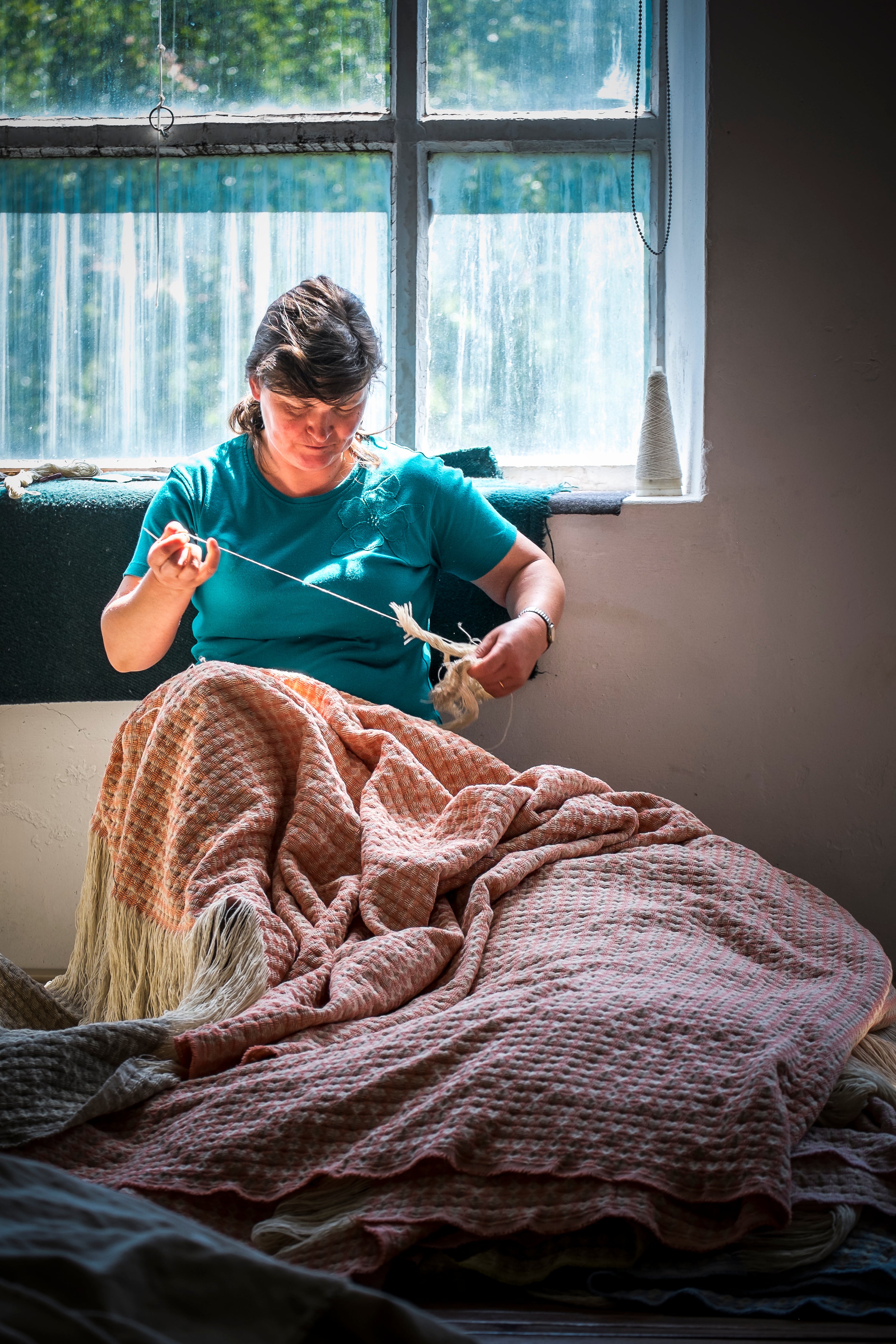
Today, it graces everything from fashion collections to the walls of Microsoft’s Lisbon offices, and of course, the interiors of both hotels. Not only as curtains, headboards and blankets in the bedrooms, but also a canopy of cut-out stars on the restaurant ceiling. It’s beneath this constellation that I sampled the other beloved by-product of those wild-grazing sheep: queijo Estrela da Serra.Handmade only in this region, these wheels of cheese are almost indecently buttery, tangy and gooey – imagine an extra-ripe camembert. It’s best eaten with the top sliced off, like a lid, spooning out the nearly liquid centre with rustic bread.
Read more: Best cities and towns in Portugal to visit
Between the punchy cheese and snow-dusted resorts, it’s easy to see why this region has been dubbed the “Portuguese Alps”.The comparison, however, should be taken with a pinch of salt. Serra da Estrela’s peaks would be dwarfed by its central European cousins – Torre, its tallest at 1,993m, is less than half the height of Mont Blanc – and its winter snowfall average of 60cm would surely be sneered at by the Swiss, whose resorts are normally dumped with 10 times as much.
Read more: The unexpected destination that is perfect for an adventure holiday
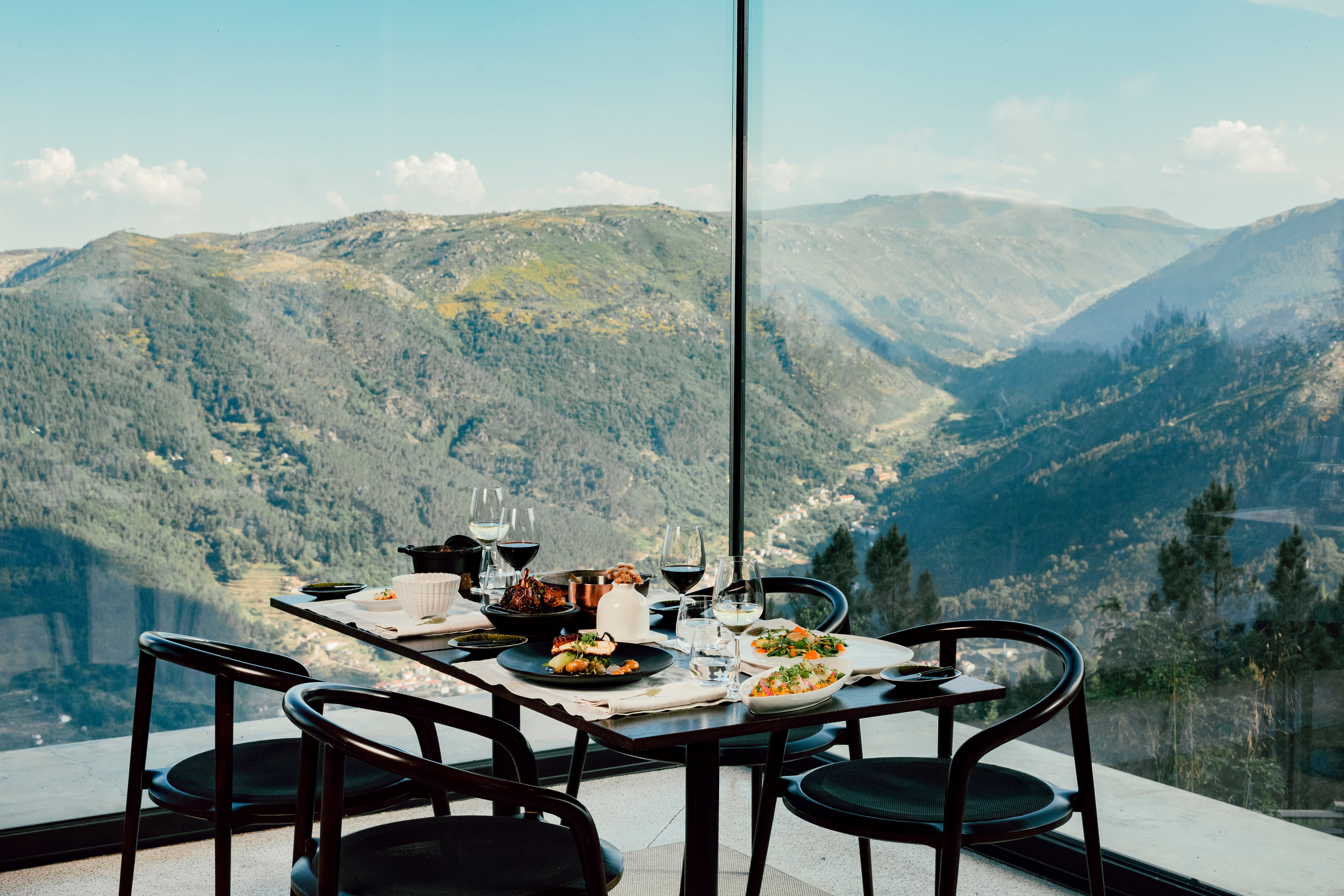
Yet for beginner skiers and budget-conscious travellers, it makes an appealing alternative to showier apres-ski scenes, crowded chair lifts and extortionate chalets. These mountains may not be Europe’s grandest – but that’s precisely the point. At a time when overtourism is straining the ecology of the Alps, as well as better-known parts of Portugal, Serra da Estrela’s trails beckon travellers who wish to step more lightly upon the land and still hear it breathe.
Estella Shardlow was a guest of Casa de São Lourenço
How to get there
I recommend renting a car to reach and explore Serra da Estrela; the drive is around 2.5 hours from Porto and three hours from Lisbon.
A number of airlines, including easyJet, Jet2, British Airways, Ryanair, Air Europa and Portugal’s national carrier Tap, operate direct flights from London to Porto (2 hours 25 minutes) or London Heathrow to Lisbon.
Where to stay
Hotel Berne is a modern, family-friendly basecamp in the village of Manteigas, with 17 cheerful rooms, a wood-panelled restaurant and winter sports equipment available to rent.
The region’s first five-star hotel, Casa de São Lourenço, offers sleek suites, a full-service spa and swimming pool – all with panoramic valley views, plus complimentary daily guided hikes.
Less than an hour from Lisbon, this little-known region is home to some of Portugal’s best beaches
How Porto became Lisbon’s cooler – and cheaper – little sister
The Rebello, Porto hotel review
The best budget hotels in Lisbon for a cheap break in the Portuguese capital
The best hotels in Lisbon’s city centre for 2025 – for stays near popular restaurants and bars
Why this Portuguese holiday resort visited by Cristiano Ronaldo is perfect for families







